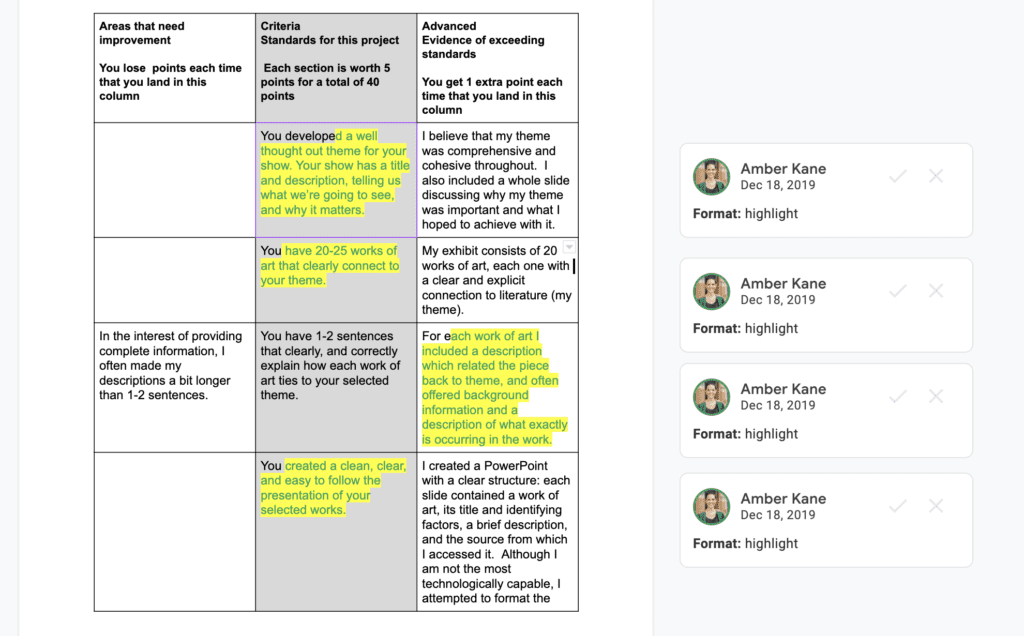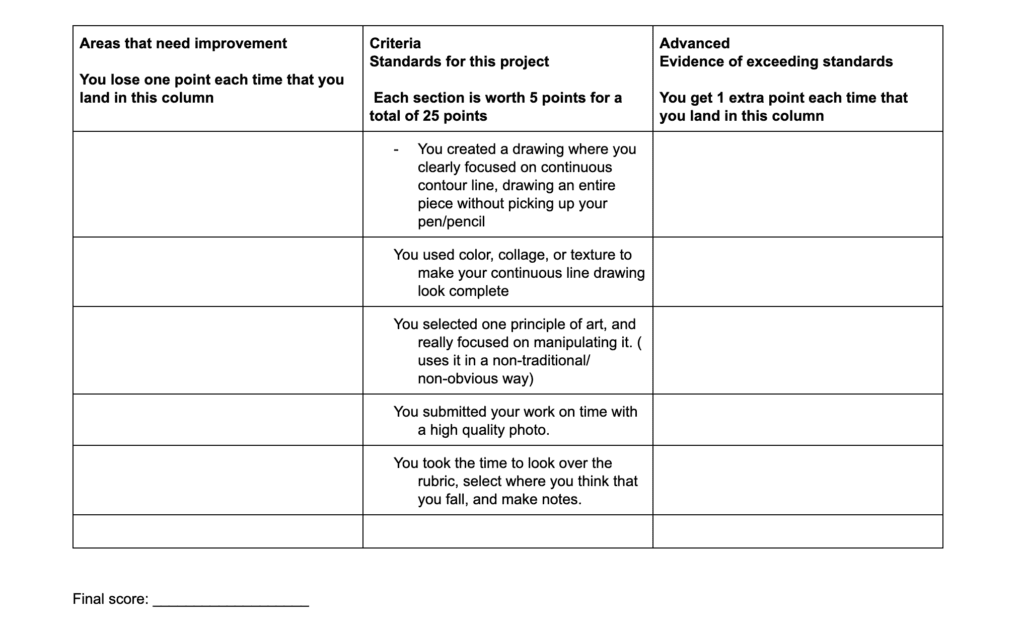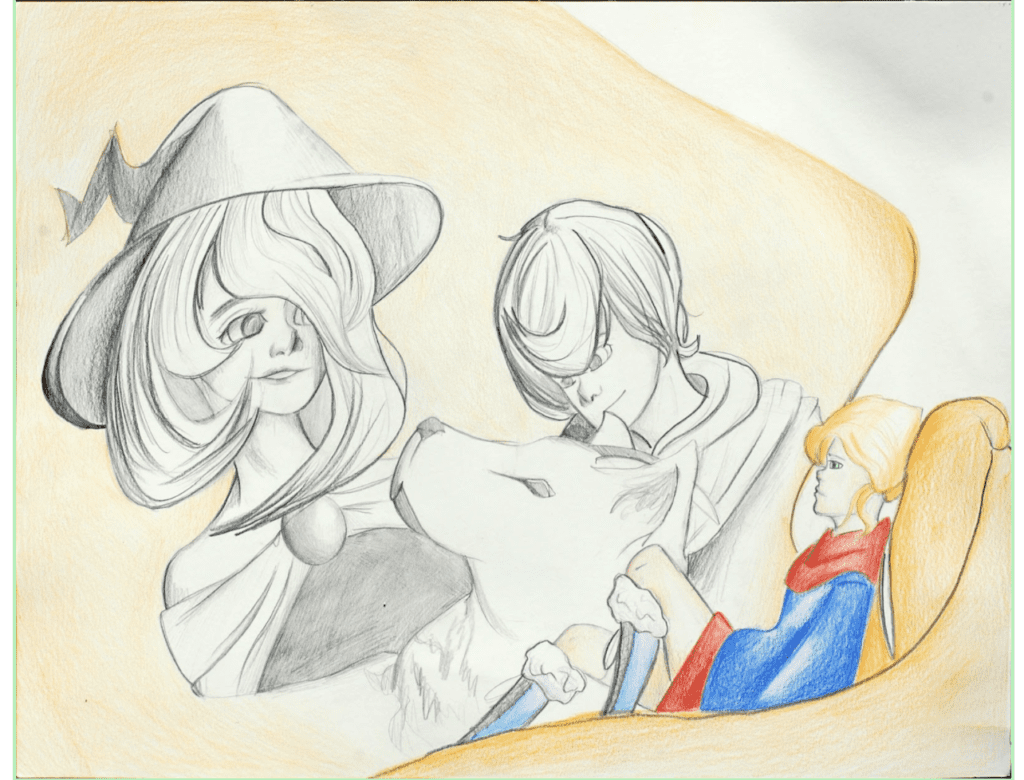How to Grade Art with a one-column Rubric
How do you grade art, isn’t it all subjective?
Your personal taste, as to what you like and don’t like when it comes to art is subjective, however, when teaching and assessing art, you aren’t grading based on your personal taste.
I have students in classes that do incredibly well, even though they create work that it well outside of my personal aesthetic. For example, Anime is extremely popular and the style tends to flow into a lot of student work. I don’t like how Anime looks, however, that doesn’t mean that my students deserve a poor grade.
When it comes to grading art, it’s important to reflect on the overall goal within a lesson. What do you want the students to learn, and how are you checking to see if they learned it?
There are many assessment practices that I use, today, we’re going to explore the 1 column rubric.
Rubrics are a powerful tool to help students understand how they’re being assessed, especially if you provide them with the rubric before they start working. If you’ve ever taking the time to write a full rubric, you know that they can be time consuming and challenging to write (note: that doesn’t mean that you shouldn’t write them).
Back to the 1 column rubric, how they work, and why I love them.
- They are easier to write, and I find that students are more likely to read them because they aren’t as overwhelming as a full 5 column rubric.
- Students can use it as a checklist, and the bonus column helps motivate them to try one or two extra things.
- They’re easy to fill out, and help students to understand the score in a simple organized fashion.
Here’s an example
The center, grey section is the area where you define what a fully completed and high quality project/assignment looks like. The column to each side, is filled out by you(the teacher) and the student, after the assignment is completed. In this example, all of the extra writing is from the student, explaining why they think they should earn a certain amount of points, the highlights are from me. This makes assessment become more of a conversation, so that everyone is learning.

Here’s one more example for you.
Another great way to create these, is to do it with the students. Work together to fill out the center column, making sure that everyone understands what they’re working on before getting started.

